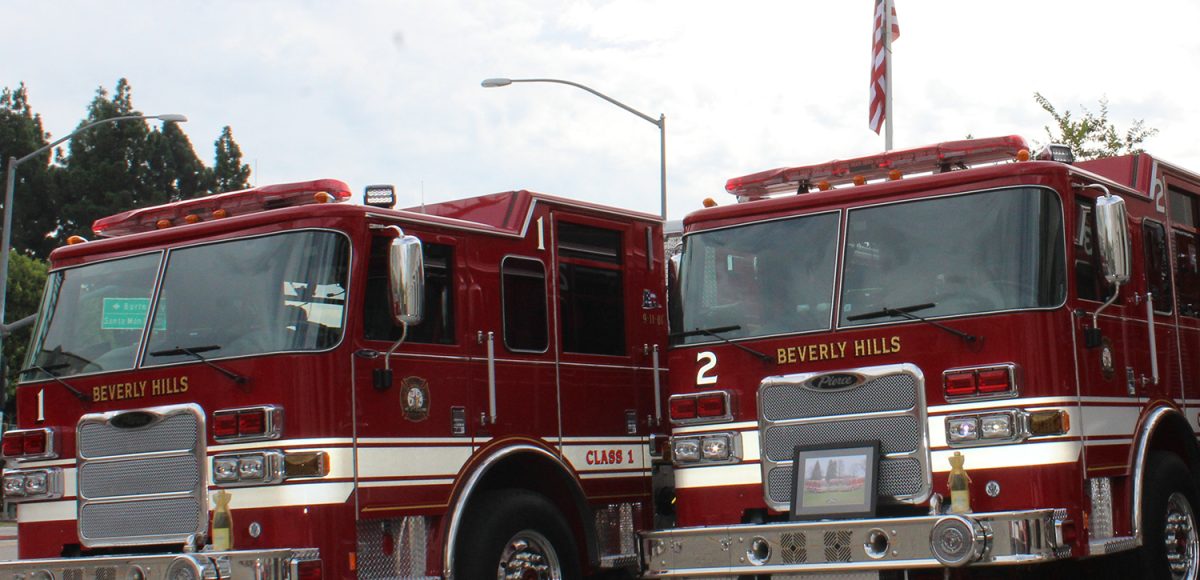As California experiences worsening wildfires and a growing fire season, homes north of Sunset Boulevard – some of the most expensive real estate in the country – have seen rising insurance premiums and insurers refusing to renew policies. On Feb. 14, the California Department of Insurance (CDI) announced new insurance standards for older homes in fire-prone areas to lower the risk of wildfire, lower premiums, and expand insurance coverage. But the standards may not go far enough.
The so-called “Safer from Wildfire” standards lay out upgrades and precautions homeowners should take to reduce their risk of loss. It also includes broader actions that communities should take.
The state already has similar standards for homes built after 2008 or homes placed on the market, but Safer from Wildfire establishes a framework that insurers could apply to older homes.
“I am using every tool available to protect Californians while reducing the risk of wildfires,” said Insurance Commissioner Ricardo Lara in a statement. “Making homes and businesses safer from wildfires protects all Californians, saving lives, reducing losses, and making insurance more available and affordable for all.”
Mark Ghilarducci, Director of the California Governor’s Office of Emergency Services, described Safer from Wildfire as “an important step forward in providing clear guidance to homeowners and insurance companies alike on the actions they can take to keep their properties safe.”
In Feb. 2021, an interagency group including Lara, Cal Fire, the Office of Emergency Services and other agencies launched an intensive study of fire risk to develop uniform standards that would entice insurers to reduce premiums and resume coverage for the most at-risk areas.
But despite having standards in Beverly Hills that exceed the framework put forward by Safer from Wildfire, residents who live in the fire-prone area north of Sunset have still seen premiums rise and insurers leave, according to Beverly Hills Fire Department Chief Greg Barton. This has left some residents without insurance altogether.
“Due to all the big fires that have happened in California over the last couple of years, insurance companies are starting to pull out of California,” Barton told the Courier. “They’re not getting insurance because they can’t get it. The other part is it’s so expensive that they can’t afford it.”
Since 2017, wildfires have razed nearly 50,000 homes in California, leading to an explosion of claims. In 2017 and 2018 alone, insurers paid out a total of $29 billion in claims. As a result, insurers began to increase premiums in fire-prone areas, sometimes declining to renew coverage altogether.
Anthony Spencer, who lives near the Virginia Robinson Gardens, spoke about his precarious insurance situation at a City Council study session in October. “We’re already in a situation where insurance companies that I insure with have already informed me that they’re not prepared to potentially insure my house because it is in an area of risk,” he said.
For Robin Kim, who spoke at the same hearing, the situation was worse. “Our insurance company already declined to insure my house,” she said, citing the risk of fire.
Some residents in Kim’s situation have turned to FAIR, the “insurer of last resort” mandated by the state, which Barton says is “expensive and the coverage level might not be what is needed for residents of Beverly Hills.”
The Safer from Wildfire guidelines recommend that structures install a Class-A Fire rated roof, the highest rating of fire resistance that can include concrete or clay roof tiles, fiberglass asphalt composition shingles and metal roofs. Homeowners are encouraged to create a 5-foot “ember-resistant zone” around homes that won’t combust from contact with embers, like a buffer of gravel or slate.
Safer from Wildfires also prescribes the following: at least 6-inches of noncombustible material at the base of exterior walls, installing ember and fire-resistant vents, upgrading windows to double paned or adding fire-resistant shutters, and enclosing eaves.
Slightly further away from structures, the framework calls for clearing vegetation and detritus from under decks, moving combustible sheds or other such structures at least 30-feet away from the home, and complying with local and state “defensible space” requirements by trimming trees, and removing brush and yard debris.
The standards also call for communities to step up by clearly defining their boundaries and seeking a risk assessment from a local fire district or state fire agency. Communities should also identify and maintain evacuation routes clear of overgrowth and have contingencies in case the primary route fails.
Beverly Hills residents already must abide by similar, if not more stringent, recommendations made by Safer from Wildfires. The city conducts inspections of homes in fire-prone areas starting in mid-April of each year to assess compliance with brush clearance standards.
While the overall insurance picture has improved over the last few years, Beverly Hills residents have not seen much relief, Barton says. As it currently stands, 13 insurers, or 40% of the market, offer discounts to homeowners who reduce their fire risk. That share is up from only 7% three years ago.
But part of the issue with how insurers calculate rates, Barton says, is that they look at the general fire risk in a given area, as opposed to looking at how well an individual structure is defended against that risk.
“The Insurance Commissioner’s office needs to do more work with insurance companies to look at individual structures instead of looking at it from a broad-brush perspective, because I believe that our residents are doing what’s required of them around their structures,” Barton said.
“In Beverly Hills, the majority of the residents here are doing an outstanding job with mitigation efforts. That should be recognized by insurance companies.”







